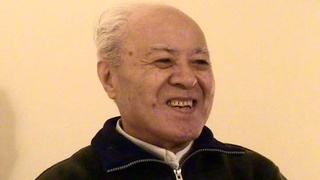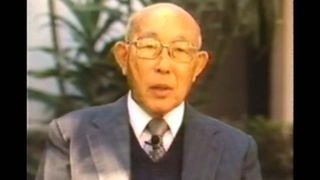Interviews
Respecting the will of a five-year-old daughter (Japanese)
(Japanese) It might have been when Nakako was around five. I was thinking I would do my best to teach her Japanese, but she told me not to. “What do you mean?” I asked her. “It’ll help you in the future. Just learn some Japanese. I’ll teach you,” I told her. She was only five years old, and even though she was so tiny, she told me, “I won’t say sorry I didn’t learn Japanese.” Then, “Please try not to teach me.” So, from that moment on, I didn’t teach her any Japanese.
Now, she complains to me about it. “Why didn’t you teach me?” she says. “You were the one who said, ‘Don’t teach me any Japanese,’ weren’t you?” I tell her back. And she answers, “But who takes such a small child’s opinion so seriously?”
Date: January 26, 2012
Location: California, US
Interviewer: John Esaki, Yoko Nishimura
Contributed by: Watase Media Arts Center, Japanese American National Museum
Explore More Videos

Retaining Japanese customs (Spanish)
(b. 1950) Nisei Chilean, Businessman

To think in one language and live in another (Spanish)
Sansei Argentinean

Studying Japanese to understand her grandfather (Spanish)
Sansei Argentinean

Japanese language is the important aspect to keep identity (Spanish)
Sansei Argentinean

Initial struggles with the language barrier (Japanese)
(b. 1917) Okinawan, Issei Argentinean

His first jobs in Argentina (Spanish)
(1925-2014) La Plata Hochi, Journalist


Japanese wife with American citizenship
Sansei Japanese American living in Japan and Kendo practioner

The Japanese-Portuguese dictionary by Dr. Yoshiharu Noda (Japanese)
(b.1911) Issei educator



Didn’t speak Japanese until moving to Japan
(1928 - 2008) Drafted into both the Japanese Imperial Army and the U.S. Army.

Being enlisted into the Japanese Army
(1928 - 2008) Drafted into both the Japanese Imperial Army and the U.S. Army.

Reaction to the Emperor’s surrender
(1928 - 2008) Drafted into both the Japanese Imperial Army and the U.S. Army.

Growing up with both Japanese and American influences
(1919-2020) Member of the 1800th Engineering Battalion. Promoted Japan-U.S. trade while working for Honda's export division.
